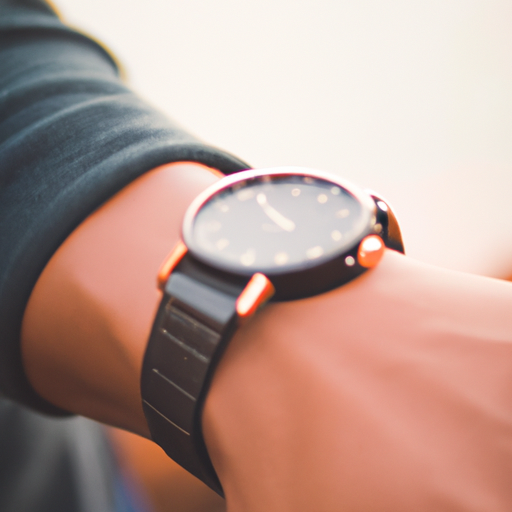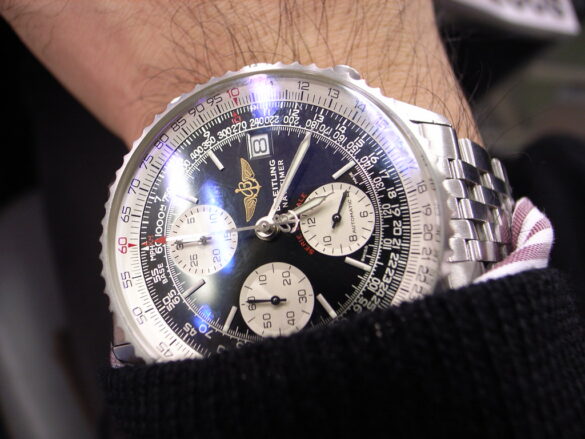The History of the Man’s Wristwatch: How It Became a Fashion Accessory
The wristwatch has been a staple of men’s fashion for centuries. Its history dates back to the 16th century, when it was first used as a tool for keeping time. Initially, watches were large and bulky, and were worn on the outside of clothing. Over time, they became smaller and more refined, eventually becoming an accessory that could be worn on the wrist.
In the late 19th century, pocket watches began to decline in popularity due to their size and inconvenience. At this time, watchmakers began experimenting with ways to make them more practical for everyday use. The result was the modern wristwatch – a smaller version of its predecessor that could be easily strapped onto one’s wrist with a leather or metal band. This new design quickly gained popularity among men who wanted an easy way to keep track of time while engaging in activities such as hunting or horseback riding.
By the early 20th century, wristwatches had become commonplace among men from all walks of life – from soldiers in World War I to businessmen in New York City offices. As technology advanced over the years, so did watch designs; by mid-century there were many different styles available ranging from classic dress watches to sporty chronographs and dive watches designed for underwater exploration.
Today’s modern man has access to an even wider variety of styles than ever before – from luxury brands like Rolex and Omega to affordable fashion pieces like Casio G-Shock or Fossil Q Explorist models – making it easier than ever before for him express his personal style through his choice of watch design.
Wristwatches have come a long way since their inception centuries ago; what started out as a utilitarian tool is now considered an essential part of any man’s wardrobe – making it clear that this timeless accessory is here stay!
The Different Styles of Men’s Watches and What They Say About Your Personality
Men’s watches come in a variety of styles, each with its own unique look and feel. From classic dress watches to modern sports watches, the type of watch you choose can say a lot about your personality. Here is an overview of the different types of men’s watches and what they might say about you.
Dress Watches: Dress watches are typically more formal in style and feature a simple design with minimal features. They often have leather straps or metal bracelets and are usually quite thin in size. If you prefer dress watches, it could indicate that you are traditional, sophisticated, and appreciate quality craftsmanship.
Sports Watches: Sports watches tend to be larger than dress watches and feature more complex designs with multiple functions such as stopwatches or timers. They often have rubber straps for comfort during physical activities or stainless steel bracelets for durability when exposed to water or extreme temperatures. If you prefer sports watches, it could indicate that you are active, adventurous, and enjoy pushing yourself to the limit physically.
Smart Watches: Smartwatches combine the functionality of a traditional watch with advanced technology such as fitness tracking capabilities or notifications from your smartphone apps. They typically have touchscreens instead of dials for easy navigation through menus on their displays. If you prefer smartwatches, it could indicate that you like staying connected at all times while also being able to track your progress towards fitness goals easily on one device without having to carry around multiple gadgets at once .
Vintage Watches: Vintage-style timepieces offer an old-school look reminiscent of classic pocket-watch designs from decades past but updated with modern materials such as stainless steel cases or sapphire crystal glass faces for added durability against wear-and-tear over time . If you prefer vintage style timepieces , it could indicate that you appreciate timeless elegance , value tradition , and enjoy wearing something unique .
In conclusion , there is no right answer when it comes to choosing which type of men’s watch best suits your personality . Ultimately , the choice is up to personal preference – so take some time exploring different styles until finding one that speaks directly to who YOU are!
How to Choose the Right Watch for Your Arm Size
When it comes to choosing the right watch for your arm size, there are a few important factors to consider. The first is the size of the watch case. A watch case that is too large or too small can look awkward and be uncomfortable to wear. Generally, watches with cases between 38mm and 42mm are considered ideal for most wrist sizes. If you have a larger wrist, you may want to opt for a larger case size such as 44mm or 46mm.
The next factor to consider is the width of the band or bracelet on your watch. If you have a smaller wrist, then thinner bands will look better than thicker ones as they won’t overpower your arm size. Conversely, if you have a larger wrist then thicker bands will provide more support and stability when wearing your watch.
Finally, it’s important to think about how comfortable the watch feels when worn on your arm. You should make sure that it fits snugly but not too tightly so that it doesn’t pinch or rub against your skin uncomfortably when worn for long periods of time.
By taking all these factors into consideration when selecting a new timepiece, you can ensure that you choose one which looks great and feels comfortable on your arm regardless of its size!
Tips for Caring for and Maintaining Your Man’s Wristwatch
1. Keep the watch clean: Wipe down the watch with a soft cloth to remove any dirt or dust that may have accumulated on it.
2. Wind the watch regularly: Make sure to wind your man’s wristwatch every day, as this will help keep it running smoothly and accurately.
3. Avoid water damage: Water can cause serious damage to a wristwatch, so make sure to keep it away from water whenever possible. If you do get your man’s wristwatch wet, dry it off immediately with a soft cloth and let it air dry before wearing again.
4. Have the watch serviced regularly: Have your man’s wristwatch serviced by a professional at least once every two years in order to ensure its accuracy and longevity.
5. Store the watch properly: When not in use, store your man’s wristwatch in its original box or another protective case that is designed for watches specifically; this will help protect against scratches and other damage caused by everyday wear-and-tear over time.
The Latest Trends in Men’s Watches: What to Look Out For
The watch industry is constantly evolving, and men’s watches are no exception. With the latest trends in technology, design, and materials, there are plenty of options for men to choose from when it comes to finding the perfect timepiece. Here is a look at some of the latest trends in men’s watches that you should be on the lookout for.
Smartwatches: Smartwatches have become increasingly popular over recent years due to their ability to track fitness data and provide notifications from your phone. Many smartwatch models now come with features such as heart rate monitoring, GPS tracking, sleep tracking, and more. They also come in a variety of styles ranging from classic analog designs to modern digital displays.
Skeleton Watches: Skeleton watches are becoming increasingly popular due to their unique design that allows you to see all of the inner workings of the watch movement through an open caseback or dial window. These watches often feature intricate details such as exposed gears or bridges that add an extra level of sophistication and style.
Minimalist Watches: Minimalist watches have been gaining popularity recently due to their sleek designs that focus on simplicity rather than complexity. These types of watches typically feature clean lines with minimal detailing or embellishments which makes them perfect for everyday wear or formal occasions alike.
Retro-Inspired Watches: Retro-inspired watches have been making a comeback lately thanks to their vintage aesthetic which adds a touch of nostalgia without sacrificing modern functionality or style. These types of timepieces often feature classic elements such as domed crystal glass faces and leather straps which give them an old-school feel while still being up-to-date with current trends in watchmaking technology.
Luxury Watches: Luxury watches remain one of the most sought after items among watch enthusiasts thanks to their superior craftsmanship and timeless designs that never go out of style no matter how much time passes by . From iconic brands like Rolex and Omega ,to independent luxury watchmakers like Breguet ,there is something for everyone when it comes luxury timepieces .
No matter what type you prefer , there is sure something out there for every man looking for his next wristwatch . With so many options available , it can be difficult deciding which one will best suit your needs but by keeping up with these latest trends you can ensure you find just what you’re looking for .
Q&A
1. What is the purpose of wearing a watch on the left arm?
The purpose of wearing a watch on the left arm is to keep it away from your dominant hand, which is usually your right hand. This allows you to use your right hand for tasks without having to worry about accidentally hitting or damaging the watch.
2. Is it better to wear a watch on the left or right arm?
It depends on personal preference and what type of activities you are doing. Generally, watches are worn on the non-dominant arm (left for most people) so that they can be used without interfering with other tasks being done with the dominant hand (right).
3. Does it matter if I wear my watch upside down?
Yes, it does matter if you wear your watch upside down as this can cause damage to its internal mechanisms and affect its accuracy over time. Additionally, some watches have specific features that require them to be worn in a certain orientation in order for them to work properly.
4. How tight should I wear my watch?
Your watch should fit comfortably around your wrist without being too tight or too loose; there should be enough room between your wrist and the band so that you can move it slightly but not enough room for it to slide up and down freely when moving your arm around. If necessary, adjust links in metal bands or remove links from leather bands until you find an ideal fit for yourself.
5. What type of strap material is best suited for everyday use?
Leather straps are generally considered best suited for everyday use as they are comfortable against skin and provide good breathability while also being durable enough to withstand regular daily activities such as typing at a computer or washing dishes at home etc.. Additionally, leather straps come in various colors and styles making them suitable for any occasion!

